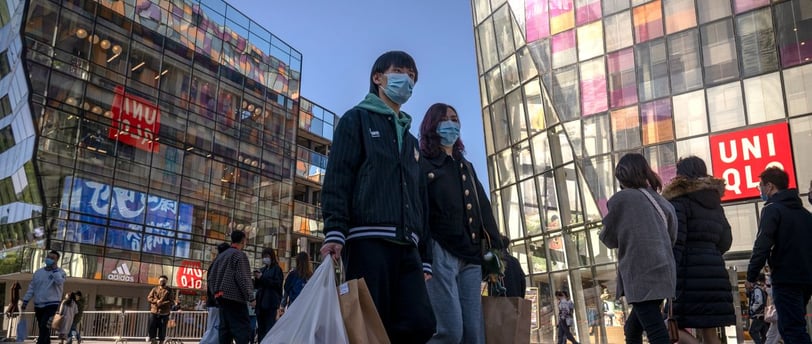Add your promotional text...
China’s Economic Recovery: Industrial Growth Shows Promise Amid Weak Consumer Spending
Synopsis: China’s industrial production grew as expected in November, signaling progress from recent government stimulus measures. However, retail sales and private consumption fell short of expectations, highlighting persistent challenges in achieving a balanced recovery. Despite improved business activity, soft consumer spending and modest fixed-asset investment continue to pressure the economy.
MARKETSGLOBAL
By Alankrita Shukla
12/16/20242 min read


China’s Mixed Economic Signals: Industrial Growth Steady, Consumer Spending Falters
China’s economic recovery is showing signs of progress, but not without challenges. November’s economic data presented a mixed picture, reflecting the impact of Beijing’s stimulus measures while exposing persistent weaknesses in consumer spending and fixed-asset investment.
Industrial Production Gains Momentum
Industrial production, a key measure of China’s business activity, grew by 5.4% year-on-year in November, aligning with market expectations and slightly improving from October’s 5.3% growth.
This steady improvement underscores the effectiveness of Beijing's recent initiatives to boost the industrial sector, including:
Easier Access to Funding: Policies aimed at improving credit availability for businesses.
Heightened Liquidity Conditions: Measures that increase the flow of money within the economy to support industrial output.
The increase in industrial activity reflects growing optimism in China’s massive manufacturing and industrial base, which remains a cornerstone of the country's economic output.
Fixed-Asset Investment Growth Slows
While industrial output gained traction, fixed-asset investment (FAI)—a critical indicator of capital spending by large businesses grew by only 3.3% in November. This fell short of expectations for a 3.5% increase, highlighting lingering caution among businesses.
FAI typically represents investments in infrastructure, machinery, and property and is a vital driver of long-term economic growth. The slowdown suggests businesses are adopting a wait-and-see approach, despite the government’s efforts to incentivize spending through:
Infrastructure projects.
Lower borrowing costs.
Retail Sales Disappoint as Private Spending Lags
China’s retail sales rose 3% year-on-year in November, a sharp slowdown from October’s 4.8% growth and well below market expectations of 4.6%.
This underperformance highlights ongoing weaknesses in consumer confidence, despite government stimulus efforts. Soft private spending remains a significant obstacle to China’s economic recovery and contributes to:
Disinflationary Pressures: Low consumer demand suppresses price increases, limiting economic momentum.
Income Uncertainty: Households remain cautious, prioritizing savings over discretionary spending.
“While measures to support businesses have shown promise, private consumption has received relatively little attention, leaving a crucial gap in the recovery process,” analysts noted.
Unemployment Remains Stable
China’s unemployment rate held steady at 5% in November, suggesting stability in the labor market. However, analysts caution that this figure may mask underlying weaknesses, such as underemployment or declining wages, which could further dampen consumer spending.
Challenges and Opportunities in China's Recovery
China’s economic recovery faces a dual challenge:
Industrial Sector Strength vs. Consumer Weakness: While industrial production shows resilience, consumer spending continues to lag.
Stimulus Impact: Government measures have primarily focused on businesses, with less emphasis on household consumption.
What Needs to Change?
To achieve a balanced recovery, experts suggest Beijing should consider policies that directly address private consumption, such as:
Direct Cash Transfers: Boosting household income to encourage spending.
Tax Reductions: Reducing the tax burden on individuals and small businesses.
Social Safety Nets: Enhancing unemployment benefits and healthcare access to improve household confidence.
Global Implications of China’s Recovery
China’s economic health holds significant implications for global markets. A robust recovery in China can:
Drive global demand for commodities and goods.
Support growth in trading partners, particularly in Asia.
Conversely, prolonged weakness in Chinese consumer spending could dampen global economic prospects, given China’s role as a major driver of international trade and investment.
Balancing the Recovery Equation
China’s November economic data reflects a tale of two recoveries: industrial production is gaining momentum thanks to government support, while consumer spending remains stubbornly weak. To achieve sustained and balanced growth, Beijing will need to focus on policies that directly address private consumption.
While challenges persist, a carefully calibrated approach that strengthens household confidence and spending could pave the way for a more comprehensive recovery, benefiting both China and the global economy in the coming years.
